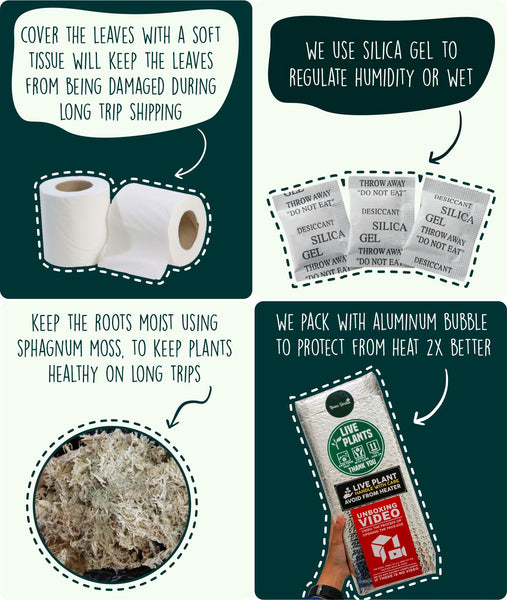Philodendron Gloriosum
Philodendron Gloriosum
Couldn't load pickup availability
Once Ready And Approved, Your Plant Will Be Packaged And Shipped To You.
For details on importing plants into your country, please read the policy below. ⚠⚠



More Information
1. Terms & Conditions
- We use a first in first out system for the shipment with the capacity of 70-80 packages per week.
- Damages from shipping are common when importing live plants, if you feel unsure or not up for the risks, please consider canceling or not ordering at all.
- If there are permanent damages, please do not worry, we will be responsible, prepare the proof of damages such as photos and videos of the damaged plants, and send them to our email support@yumegardens.com
- Reporting cases to PayPal will delay the problem-solving further, so please remain calm, contact us, and be patient if any problem occurs, we will reach out to you as soon as possible after claims are made.
- Refunds are only eligible for those who have enough proof of damages and can only be done if all the requirements are met, if there is any case being raised, we will not hesitate to delay the process.
- Resend is also eligible for those who have enough proof of damages and can only be done if all the requirements are met. There will be a $45 shipping fee for the resend, but it is negotiable if there’s some conditions, please contact us for more information.
- Order cancellations cannot be processed after 3 days after the order has been made, exceptions are only acceptable under some circumstances.
- All form of import fee, taxes, and duty fees are out of our control, it is charged by the courier and it is customer’s responsibility to pay, we will not take any liability for any problem in regard of the taxes.
- Indonesian regulation requires a phytosanitary certificate for exporting, so please always include it in your order.
- Please provide us with an Import Permit and a Green/Yellow label for your imports.
More information is available through these websites;US for any number plants:
- Import Permit: https://www.aphis.usda.gov/aphis/resources/sa_epermits/sa_plants/ppq-epermits
- Green Labels : https://www.aphis.usda.gov/aphis/ourfocus/planthealth/import-information/permits/plants-and-plant-products-permits/plants-plantproducts-shipping-labels
Canada for any number plants:
UK and other EU Countries:
2. Where do you ship?
We ship to USA, Canada, the Netherlands, Germany, United Kingdom, Czechia, Ireland, Switzerland, Cyprus, Norway, Poland, Austria, Denmark, Finland, Hungary, Serbia, Slovakia, Slovenia, Turkey, Singapore, Brunei, Philippines, Thailand and many other countries
3. Do you offer free shipping?
Yes, we offer free shipping for a minimum order of $800 for all countries
4. Do I need an import permit?
- For US, import permits and green/yellow label are required for any number plants.
- For Canada, import permit is required for the shipment.
- For UK, Poland, the Netherlands, and other EU countries, there will be no import permit, but there are other requirements required for the imports, please refer to “Terms and Conditions” for more information.
- For Singapore, Thailand, and other Asia countries, import permit is required for order more than 3 plants.
5. How can I track my package?
You can track your order by clicking this linkhttps://greenspaces.id/pages/order-progress
6. What if the plants are arrive in damaged?
You can send us a message to claim the damages through our email: support@yumegardens.com
7. What payment methods do you accept?
We accept PayPal and credit/debit cards.
8. How do you ship your plants?
We ship in double walled strong cardboard boxes, with air cushion packages to keep the plants as safe as possible. Generally, plants are rooted in damp sphagnum moss or Leca, others in a mix of coir.
Description

Plants are sent to your home to decorate your garden or your house. We pack with super safe packaging, so that your plants arrive safely.
HOW DOES IT WORK !

- Plants on the picture is the one will be sent to you And we will send you the real picture before sending it.
- Phytosanitary Certificate included on the price.
- We Use DHL Express to be arrive faster.
- The plants we send have healthy leaves and roots



